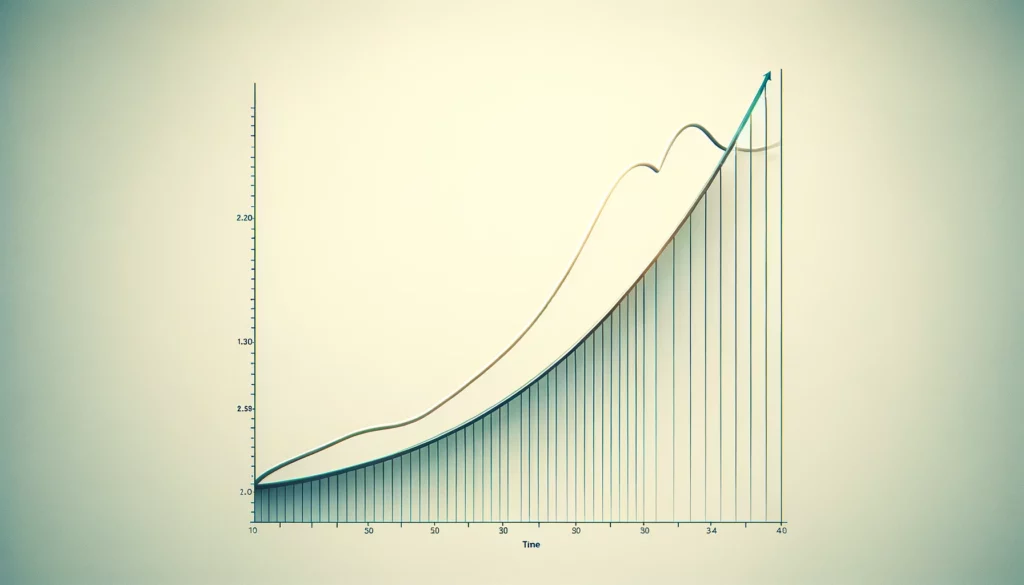How to Construct Line Plots for Easy Data Interpretation
A line plot is a very handy graph to see how numbers change over time. In this type of graph, we join data points with a line so patterns can be easily spotted. The line helps us know if numbers are generally going up or down.
This article will explain what line plots are, how to make line plot and give examples. We will see different types of data presented in line plots. By the end, you will know how to interpret line graphs and learn things from them. Let’s begin!
What is a line plot?
A line plot, also known as a line graph, is a data visualization technique where individual data points are plotted along a number line. It is useful for displaying changes in a quantity over sequential periods or other continuous independent variables like distance or temperature.
In a line plot, the values are represented by dots or short lines adjacent to uniformly spaced points along the horizontal axis. The horizontal axis represents the independent variable, while the dependent variable is plotted on the vertical axis. By joining the dots sequentially, it forms a line that indicates the trends or patterns in the data.
How to make line plot?
Here are the basic steps to construct a line plot:
- Choose the data: Select the numeric data you want to analyze that has been collected over intervals. It could be things like temperature over months, sales over the years, student scores over test sessions, etc.
- Assign axes: Decide which variable will be plotted on the horizontal x-axis (independent) and vertical y-axis (dependent). Label them clearly.
- Add scale: Include appropriate scale intervals on both axes depending on your data range. Make sure scales are consistent to compare values accurately.
- Plot data points: Mark individual data values as dots/short lines on the graph paper at their respective x-y coordinates. Use a consistent symbol/style.
- Connect points: Draw a continuous line that goes through all the data points in sequential order. This line indicates the trend.
- Add details: Provide a title, legend, units, etc., to make the plot informative and easy to interpret.
Now, let’s understand this with some examples.
Example line plots

Student test scores
Let’s take student test scores over 3 sessions as an example.
We’ll plot Session Numbers (1-3) on the x-axis and Test Scores (0-100) on the y-axis. Then, mark each student’s scores as dots and join them with a line for every student.
This helps compare individual performance trends and analyze whether scores improve or decline over time for better planning.
Weather data
Another example could be the average daily temperature (in °C) of a city over 30 days.
Days (1-30) will be on the x-axis, and Temperature (-5 to 45°C) on the y-axis. We join the temperature dots to see hot/cold patterns and spells. This information is useful for travellers.
Stock price movement
Stocks of a company can also be tracked in a line plot with Date on the x-axis and Closing Price on the y-axis. Connecting the price dots indicates if the stock is rising, falling, or fluctuating over the period.
Interpreting line plots
Once your line plot is ready, here are some ways to understand the trends:
- Visually compare lines – their slopes indicate rise/drop rate, which the eye picks easily
- Note the highest and lowest points marked by dots
- Observe any intersections where lines cross each other
- Look for overall shapes – uphill, downhill, or waves which reveal key tendencies
- Spot patterns like cycles, clusters, etc., for seasonal/recurring behaviors
- Consider adding trend lines for clearer visualization of direction
- Calculate numerical metrics like average correlation if needed
Choosing appropriate scales
The scales used on the axes play an important role in interpreting the data accurately from a line plot. Some tips for selecting scales:
- Use consistent scaling all along both axes to maintain uniform intervals.
- Round off values to eliminate decimals if they are too many.
- Leave some space at the edges to avoid crowding near the origin.
- Make sure the highest and lowest values lie on the scale to observe the full range.
- Consider breaking scales into smaller parts if there is a large difference between min and max.
- Use logarithmic scales if values greatly differ to maintain proportionality.
Conclusion
A simple line plot is a very effective visual representation of data changes over linear variables. With some practice in plotting real examples, observers can gain valuable insights into trends, patterns, and outliers that numbers alone might miss. Creating line plots is quite easy once you know how to do a line plot.
Whether for students, researchers, or general data analysts, line plots serve as suitable, self-explanatory illustrations of quantitative evolutions over time or space. Their easy construction and intuitive representations, made possible by understanding how to do a line plot, have made them a perennial data visualization technique.







